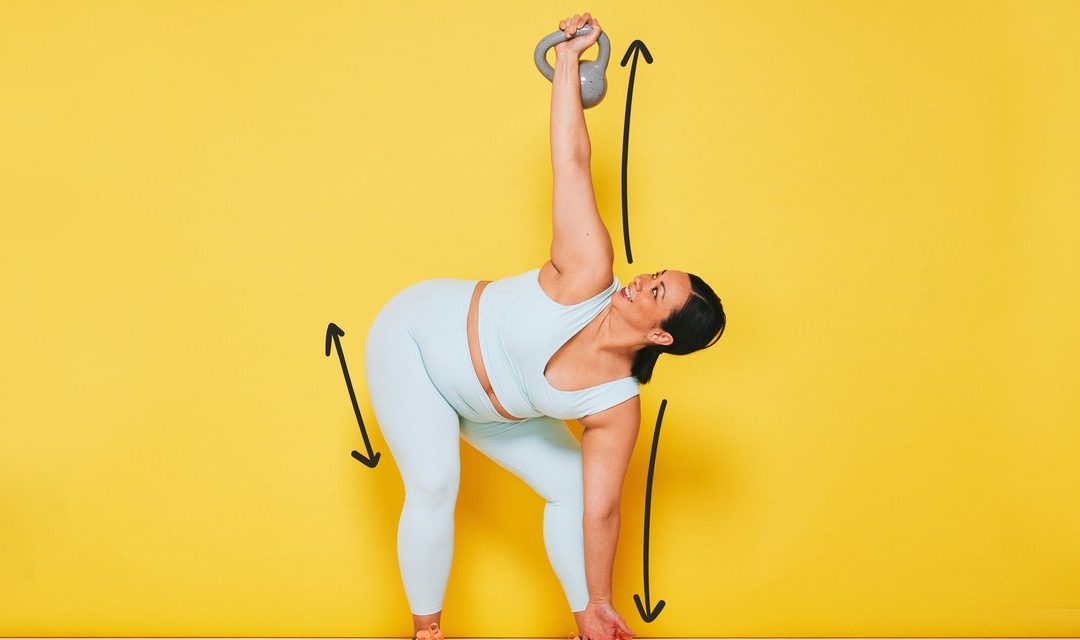If you’re looking for an exercise that ticks all the boxes (strength, stability, and mobility), let us introduce you to the kettlebell windmill. This full-body movement—which involves holding a weight overhead while you push your hips back, rotate your torso, and reach your other arm toward the floor—packs in a whole lot of perks, making it a worthwhile addition to pretty much anyone’s workout routine.
“It has so many benefits,” Lacee Lazoff, certified personal trainer, certified kettlebell specialist, and founder of the kettlebell training program Bells Up, tells SELF. But the windmill isn’t run-of-the-mill: It’s actually quite nuanced, which is why knowing how to do it correctly is key. With that in mind, we tapped Lazoff for step-by-step instructions for mastering this multitasking move.
What muscles does a kettlebell windmill target?
The kettlebell windmill is a two-for-one exercise that strengthens and stretches muscles throughout your body. It’s a “total-body movement,” Lazoff says. On the strengthening front, it engages your entire core, including your rectus abdominis (front abs) as well as your obliques (muscles on the sides of your torso) and transverse abdominis (deep core muscles that wraps around your spine and sides), Lazoff explains. A lot of the core work comes from the fact that you’re rotating your torso as you reach your arm toward the floor.
It also fires up your shoulders (including your small stabilizing muscles) and lats (the broadest muscle in your back), as those help you hold the bell steady overhead, Lazoff adds. Then there’s the mobility aspect: The windmill delivers a really good stretch in your hips, hamstrings, and glutes, Lazoff says, all of which you will feel during the lowering portion of the move.
What are the benefits of a windmill?
Because the windmill involves lifting a weight overhead—and keeping it steady there—it’s great for shoulder stability, Lazoff explains. This is important, since more stable shoulders can reduce your chances of injuring that joint and improve your ability to use it effectively both in and out of the gym, whether you’re hauling a heavy bag or groceries, pressing weight overhead, or throwing a frisbee to your dog.
There’s the fact that you’re building core strength. When you rotate your torso underneath the weight, you automatically fire up a ton of muscles in your midsection. “You’re really using your full core, so your abs in the front all the way to the ones that wrap around the back,” Lazoff explains. Having comprehensive strength in this powerhouse muscle group—and not just your front abs—has big-time functional benefits, helping you maintain stability across your entire body and reducing your injury risk in tons of scenarios, whether that’s hauling a hefty bag of groceries or squatting with a stacked barbell in the gym, SELF previously reported.
